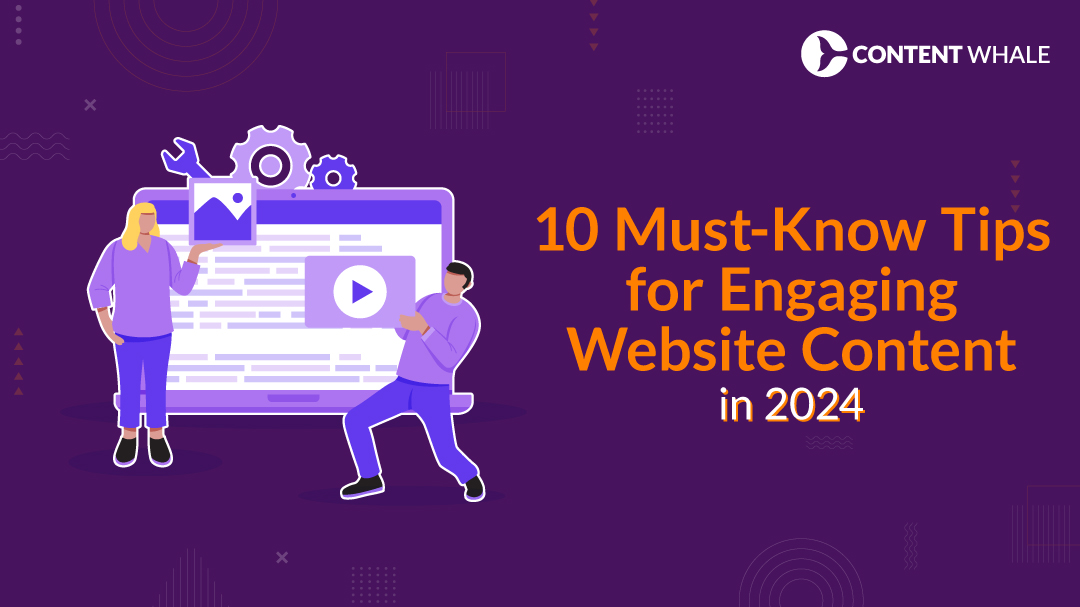Content repurposing is the process of transforming existing content into different formats to extend its reach and maximize its value. This practice is essential in a robust content marketing strategy, as it allows businesses to save time, improve SEO, and engage with diverse audiences across multiple platforms.
The primary benefits of repurposing content include enhancing visibility, optimizing resource use, and reinforcing key messages without the need for constant content creation. For instance, a single blog post can be adapted into a video, infographic, or series of social media updates, thereby reaching different segments of your audience more effectively.
In this guide, we’ll explore the many benefits of repurposing content, provide practical content repurposing tips, and recommend tools to streamline the process. By adopting these strategies, you can enhance your digital marketing efforts and ensure your content achieves maximum impact.
What is Content Repurposing?
Content repurposing involves taking existing content and adapting it into various formats to extend its reach and enhance its value. This process allows you to engage with different audience segments across multiple platforms, ensuring that your content remains fresh and relevant. Unlike content recycling, which might involve simply reposting old content, repurposing adds value by transforming the information into new, engaging formats.
1. Detailed Definition and Explanation
Content repurposing means taking a single piece of content and adapting it to fit different mediums and formats. This approach ensures that the content can be consumed by different audience types who may prefer different content formats. For example, a blog post can be converted into a video, a podcast, an infographic, or a series of social media posts. This method maximizes the original content’s reach and impact, allowing it to be discovered by new audiences who might not have engaged with the original format.
Repurposing is distinct from content recycling. While recycling involves reposting the same content, repurposing requires modifying the content to suit different formats and channels. This often involves rethinking how the content is presented to make it more engaging for each specific platform. For instance, a blog post might be too detailed for a YouTube video, so the key points are extracted and presented in a more visual and concise manner.
2. Examples of Content Repurposing in Practice
i) Blog Post to Video
A detailed blog post can be turned into a short, engaging video. For example, a step-by-step guide on a particular topic can be illustrated with visuals and narration, making it more accessible to viewers who prefer video content over text.
ii) Webinar to Blog Series
The content from a webinar can be transcribed and split into a series of blog posts, each focusing on a specific topic discussed during the webinar. This not only makes the information available in text format but also allows for deeper exploration of each sub-topic.
iii)Podcast to Social Media Posts
Key quotes and insights from a podcast episode can be turned into social media posts, complete with visuals and audio snippets. This approach helps in reaching audiences who might prefer quick, digestible content on platforms like Instagram or Twitter.
iv) Infographic to Slideshare Presentation
An infographic that summarizes data or processes can be expanded into a detailed Slideshare presentation, providing more in-depth explanations and additional context. This format is particularly useful for professional and educational audiences.
By leveraging these strategies, you can ensure that your content maintains its value and continues to engage your audience across different formats and platforms. This approach is a cornerstone of an effective content marketing strategy, helping you to maximize content value and enhance your overall digital marketing efforts.
Key Benefits of Repurposing Content

Repurposing content offers several significant advantages that can enhance your content marketing strategy and overall digital marketing efforts. Here are some of the primary benefits of repurposing content:
1. Reach a Broader Audience
Repurposing content allows you to present your message in various formats, making it accessible to different audience segments. For instance, some people prefer reading blogs, while others might engage more with videos or infographics. By adapting your content, you can ensure it reaches a wider audience who may have missed the original format.
2. Improve SEO and Increase Organic Traffic
Repurposing content helps improve your SEO by creating multiple pieces of content around the same topic, targeting different keywords. This strategy can lead to higher search engine rankings and increased organic traffic. When you use keyword-rich content in various formats, you appeal to different search intents, enhancing your site’s visibility.
3. Save Time and Resources
Creating new content from scratch is time-consuming. Repurposing existing content saves time and resources, allowing you to maintain a steady flow of content without the constant need for new material. This efficiency is particularly beneficial for small teams or solo content creators.
4. Reinforce Key Messages
Reusing content helps reinforce your core messages. Presenting the same information in different ways ensures that your audience absorbs and remembers your key points. This approach prevents your message from sounding repetitive while keeping it fresh and engaging.
5. Increase Content Lifespan
Repurposing gives your content a new lease on life. Instead of letting valuable content gather dust, you can update and adapt it to keep it relevant. This practice not only extends the lifespan of your content but also maximizes the return on your initial investment.
6. Enhance Engagement and Shareability
Different formats can boost engagement and make your content more shareable. Infographics, videos, and social media snippets are more likely to be shared by your audience, increasing your content’s reach and impact. Visually appealing content, in particular, tends to perform well on social media platforms.
7. Foster Consistency Across Platforms
Repurposing content ensures consistency in your messaging across various platforms. By maintaining a unified voice and style, you build a stronger brand identity. This consistency is crucial for establishing trust and recognition with your audience.
By incorporating these strategies, you can maximize content value and create a more efficient and effective content marketing strategy. Implementing these content repurposing tips will help you maintain a strong digital presence and engage your audience in meaningful ways.
Effective Strategies for Repurposing Content

Repurposing content is a powerful strategy to maximize the value of your existing content and enhance your overall content marketing strategy. Here are some effective content repurposing tips to help you get started:
1. Transform Blog Posts into Videos
Turning blog posts into videos is a highly effective way to engage with your audience. Videos can capture attention and convey information more dynamically. Create a video script from your blog content, highlighting key points, and use visuals to enhance the message. This method caters to those who prefer consuming content through video formats.
2. Convert Webinars into Blog Posts or E-books
Webinars are rich in content and can be transcribed into written formats such as blog posts or e-books. This approach not only extends the lifespan of your webinar content but also makes it accessible to audiences who prefer reading. Edit the transcribed content, add relevant images, and optimize it for SEO to increase its reach and effectiveness.
3. Create Infographics from Data-Heavy Content
Infographics are excellent for presenting data and statistics in a visually appealing and easily digestible format. They are highly shareable on social media, which can help increase your content’s visibility. Transform your detailed blog posts or reports into infographics to engage your audience with visual content.
4. Develop Podcast Episodes from Blog Content
Podcasts have gained immense popularity and offer a convenient way for audiences to consume content on the go. Convert your blog posts into podcast episodes by narrating the content or discussing it with guests. This strategy allows you to reach listeners who prefer audio content and can significantly broaden your audience.
5. Split Long-Form Content into Smaller Pieces
Breaking down long-form content, such as comprehensive guides or detailed articles, into smaller, bite-sized pieces can help maintain audience engagement across different platforms. For example, extract key sections from a long blog post and share them as individual social media updates, each with a link back to the original post.
6. Turn Customer Testimonials into Social Proof
Repurpose customer testimonials into various formats to build credibility and trust. Create video testimonials, blog posts, or social media graphics featuring customer feedback. This strategy showcases real-world benefits and outcomes of your products or services, enhancing your brand’s reputation.
7. Compile Blog Posts into an E-book
If you have a series of blog posts on a related topic, compile them into an e-book. This not only provides a comprehensive resource for your audience but also serves as a lead magnet to grow your email list. Ensure the e-book is well-structured, visually appealing, and offers additional value compared to the individual blog posts.
By implementing these strategies, you can effectively maximize content value and create a diverse range of content formats that cater to different audience preferences. This approach will enhance your digital marketing efforts and ensure your content remains impactful and engaging across various platforms.
Tools and Resources for Content Repurposing
| Tool | Primary Function | Key Features | Pricing | Suitability |
|---|---|---|---|---|
| Lumen5 | Convert text into videos | AI content summarization, drag-and-drop editor, video templates, automatic captions | Free plan available; Paid plans start at $29/month | Small businesses, enterprises, content creators |
| Repurpose.io | Automate content repurposing | Multi-platform support, automation for re-uploading, video resizing, captioning | Free 14-day trial; Paid plans start at $25/month | Marketing teams, influencers, podcasters |
| Canva | Create visual content | Drag-and-drop editor, templates, Magic Write for captions, Brand Kit | Free plan available; Paid plans start at $14.99/month | Businesses, marketers, content creators |
| Piktochart | Create infographics and presentations | User-friendly interface, variety of templates, easy data visualization | Free version available; Paid plans start at $15/month | Marketers, educators, content creators |
| Otter.ai | Transcribe audio and video content | Accurate transcriptions, keyword highlights, integrations with other tools | Free plan available; Paid plans start at $8.33/month | Content creators, businesses |
| Automata | AI-driven content automation | Monitors content feeds, supports 150+ input/output combinations, templates | Custom pricing | Businesses, content creators |
| Visme | Create visual content | Templates for infographics, presentations, and reports, easy customization | Free version available; Paid plans start at $15/month | Marketers, educators, content creators |
Effective content repurposing relies on the right tools and resources to streamline the process and maximize the value of your content. Here are some of the top tools and resources that can help you enhance your content marketing strategy and ensure you’re getting the most out of your content creation efforts:
1. Lumen5
Lumen5 is an AI-powered tool that converts blog posts and other written content into engaging videos. It uses AI and machine learning to summarize your content and match it with relevant images and video footage. This tool is ideal for businesses looking to enhance their video content without extensive video editing skills. Lumen5’s drag-and-drop editor and automatic captioning features make it user-friendly and effective for boosting social media engagement.
2. Repurpose.io
Repurpose.io automates the process of repurposing content across multiple platforms. It allows you to convert a single piece of content, such as a podcast or video, into various formats suitable for different social media channels. This tool supports all major platforms, including Facebook, Instagram, YouTube, TikTok, and more. Its automation features save time and ensure your content reaches a wider audience.
3. Canva
Canva is a versatile design tool that simplifies creating visual content. With its content repurposing capabilities, you can turn blog posts into infographics, social media graphics, presentations, and more. Canva’s drag-and-drop editor, along with its extensive library of templates and design elements, makes it easy to produce professional-looking visuals. The “Magic Write” feature can help generate captions and social posts quickly, making it a valuable tool for digital marketing.
4. Piktochart
Piktochart is another excellent tool for creating visual content. It allows you to craft infographics, presentations, and reports from existing content. This tool is particularly useful for repurposing data-heavy blog posts into visually appealing infographics that are easily shareable on social media. Piktochart’s user-friendly interface and variety of templates make it accessible even for those with limited design experience.
5. Otter.ai
Otter.ai is a powerful transcription service that converts audio and video content into text. This tool is perfect for repurposing webinars, podcasts, and video content into blog posts, social media updates, and more. By providing accurate transcriptions, Otter.ai allows you to extract valuable quotes and insights for use in various formats, enhancing the reach and engagement of your content.
6. Automata
Automata is an AI-driven tool designed for businesses and content creators to automate the repurposing process. It monitors your blog feed or YouTube channel and generates new content from existing materials. Automata supports over 150 input/output combinations, making it versatile for converting videos into blog posts, newsletters into social threads, and more. This tool helps maximize the value of your content by automating routine tasks.
7. Visme
Visme is ideal for creating visually compelling presentations, infographics, and reports. It offers various templates that can help you repurpose long-form content into shareable visual assets. This tool is especially useful for turning detailed blog posts or case studies into engaging visual content that can capture the attention of a broader audience on social media.
Using these tools can significantly enhance your content marketing strategy by making it easier to maximize content value through effective repurposing. They help streamline the process, save time, and ensure your content reaches and engages a wider audience across multiple platforms.
Best Practices for Maximizing Content Value

Maximizing the value of your content involves strategic planning and execution. Here are some best practices to ensure your content remains relevant, engaging, and effective in achieving your marketing goals:
1. Conduct a Content Audit
Regular content audits help identify high-performing content and potential opportunities for repurposing. By analyzing your existing content, you can determine which pieces can be updated, expanded, or transformed into different formats to maintain their value and relevance. This process not only saves time but also maximizes the return on your initial investment in content creation.
2. Tailor Content to Different Platforms and Audiences
Different platforms have varying audience preferences and engagement styles. Tailoring your content to fit the specific platform ensures better engagement and effectiveness. For instance, turning a detailed blog post into an engaging video for YouTube, an infographic for Pinterest, or a series of social media posts for Instagram can help you reach diverse audience segments.
3. Ensure Consistency in Messaging and Branding
Maintaining consistency in your messaging and branding across all content formats and platforms is crucial. This consistency helps build brand recognition and trust among your audience. Use tools like Canva to create a unified look for all your content, ensuring that your brand’s voice and visual style are coherent and recognizable.
4. Track Performance Metrics and Adjust Strategies
Monitoring the performance of your repurposed content is essential to understand its impact and effectiveness. Use analytics tools to track metrics such as engagement, reach, and conversion rates. This data will help you identify what works and what doesn’t, allowing you to adjust your strategies accordingly to optimize your content marketing efforts.
5. Encourage Audience Feedback
Engaging with your audience and encouraging feedback can provide valuable insights into their preferences and needs. Use social listening tools to monitor discussions about your brand and industry. This feedback can guide your content creation and repurposing strategies, ensuring that your content remains relevant and valuable to your audience.
Implementing these best practices will help you effectively repurpose your content, ensuring that you maximize its value and maintain a strong digital presence. This approach not only enhances your content marketing strategy but also helps you stay competitive in the dynamic world of digital marketing.
Conclusion

Repurposing content is an essential strategy in modern digital marketing. By transforming existing content into various formats, you can reach new audiences, extend the lifespan of your materials, and improve overall engagement. The benefits of repurposing content are numerous, including enhanced SEO, time and resource efficiency, and the ability to maintain a consistent brand message across multiple platforms.
Effective content repurposing tips involve tailoring content to suit different formats and audiences, ensuring it remains relevant and engaging. This strategy not only maximizes the value of your original content creation but also contributes to a robust content marketing strategy that can significantly boost your digital presence.
By adopting these practices, you can ensure that your content continues to deliver value, supports your marketing goals, and strengthens your overall digital marketing efforts. Start repurposing your content today to unlock its full potential and maximize your marketing impact.
FAQs
What is content repurposing and why is it important?
Content repurposing involves taking existing content and transforming it into different formats to extend its reach and impact. This approach maximizes the value of your initial content creation efforts and supports a robust content marketing strategy. It allows you to reach new audiences, save time and resources, and keep your content relevant across multiple platforms.
How can repurposing content improve my SEO?
Repurposing content enhances SEO by creating multiple pieces around the same topic, targeting various keywords and search intents. This strategy can improve search engine rankings and increase organic traffic. For instance, transforming a blog post into a video or infographic can attract different types of traffic and backlinks, boosting your site’s SEO. Consistently updating and republishing content keeps it relevant, helping maintain or improve its search rankings.
What types of content can be repurposed effectively?
Several types of content can be effectively repurposed, including:
- Blog posts: Convert into videos, infographics, social media posts, or e-books.
- Webinars: Transcribe into blog series, e-books, or shorter video tutorials.
- Podcasts: Transcribe into blog posts or create social media snippets.
- Infographics: Expand into detailed blog posts or break down into social media posts.
- Case studies and research reports: Transform into blog posts, infographics, and social media content.
What tools can help with content repurposing?
Several tools can assist with content repurposing, including:
- Lumen5: Converts blog posts into engaging videos using AI.
- Canva: Ideal for creating infographics, social media graphics, and presentations.
- Repurpose.io: Automates the repurposing process across multiple platforms.
- Otter.ai: Transcribes audio and video content for repurposing into text formats.
- Piktochart: Helps turn detailed reports into shareable infographics.
How can I measure the success of my repurposed content?
To measure the success of repurposed content, track key performance metrics such as:
- Engagement rates: Likes, comments, shares, and views across different platforms.
- Traffic: The amount of traffic driven to your site from repurposed content.
- Conversion rates: The number of leads or sales generated from repurposed content.
- SEO performance: Improvements in search engine rankings and organic traffic.
- Backlinks: The number of backlinks generated by repurposed content, which can enhance your site’s authority and SEO.





